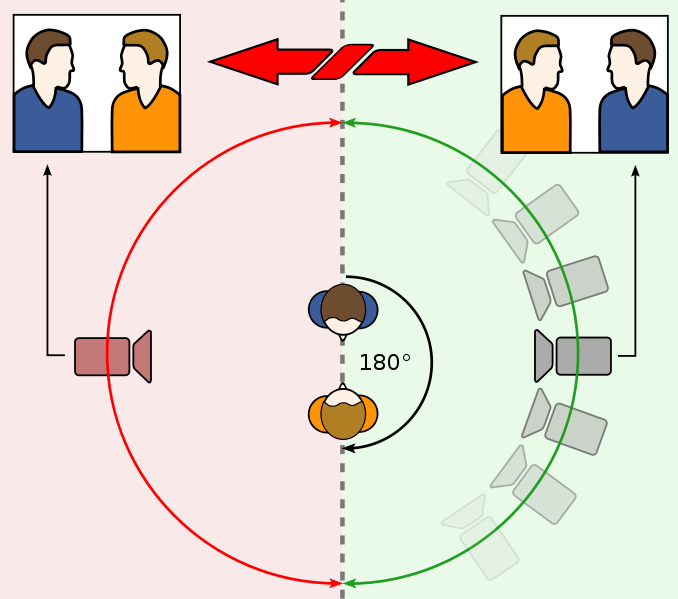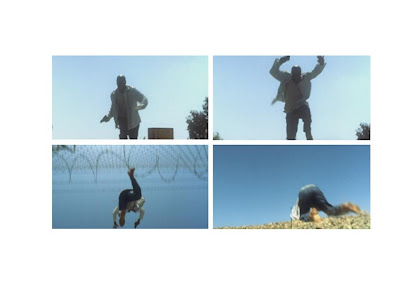The 180° rule basically means that when there are different shots, the two character should be in the same position for example, if 'Person A' was on the left and 'Person B' was on the right hand side and then there was a new shot which will have to be the opposite side so now 'Person A' will be on the right and 'Person B' on the left. Here is an example of the '180° rule'-
'A' 'B' 'B' 'A'

Shot-Reverse-Shot:
Shot-Reverse-SHOT is where one character is shown looking at another character (looking each other) so in the next shot it should be the opposite so then it shows that the first character has its back to the second character. Here i some more information about Shot-Reverse-Shot http://en.wikipedia.org/wiki/Shot_reverse_shot
Examples of my own photos of Shot-Reverse-Shot:
 'Reverse Shot'
'Reverse Shot'Match-on-Action
A cut which joins two different views of the same action together at the same moment in the movement. so that it doesn't look like it's interrupted when watching the film quite logically. these characteristics make it one of the most common transitions in the continuity style. Here is an example from the movie Traffic:
http://en.wikipedia.org/wiki/Continuity_editing


No comments:
Post a Comment